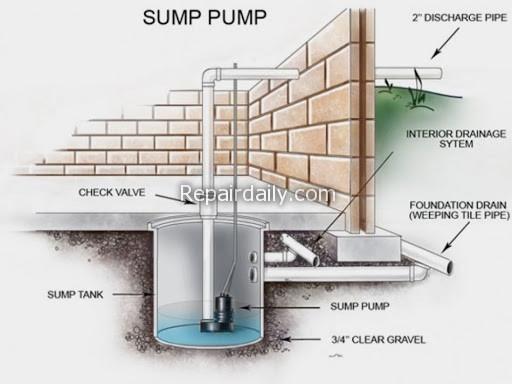


sump pump
As a homeowner, there are a lot of different factors to take into consideration. However, if you’re like most, installing a sump pump is not usually on the top of the list of things to worry about. For starters, what is a sump pump? Do I really need one? How much money will it take to have installed? At WaterFiltersAdvisor, sump pumps are reviewed and fully discussed. This includes what they are, what they do, and whether or not you should consider installing one in your home.
What is a Sump Pump?
So, what is a sump pump? Basically, a sump pump is a pump that prevents your basement from flooding with water. This is a very common installment in homes, especially in areas that experience large amounts of rainfall, or houses built on soil wherein the soil quality allows sinkage. Sump pumps from https://sumppumpguides.net/ are great not only for flooding but for gathering and preventing build up of excess moisture which can lead to other problems in home maintenance such as wood damage, paint chipping, or even mold occurrences. There are two different types of sump pumps:
Submersible Sump Pumps


Submersible Sump Pumps
Submersible sump pumps are sump pumps that sit inside the sump pump pit. A sump pump pit is a pit that is dug into the lowest point of your home to collect all water that may have leaked into the home. Submersible sump pumps sit in these pits and filter out any debris that may lead to clogging and flooding.
Pedestal Sump Pumps


Pedestal Sump Pumps
Unlike submersible sump pumps, pedestal sump pumps stand up and outside of the sump pump pits and use a power source to lower down a motor into the sump pump pit to remove or filter out the water and debris. Pedestal sump pumps are much louder, and larger to have around and can be powered in different ways.
Water- Powered Sump Pumps


Water- Powered Sump Pumps
Water powered sump pumps do not need running electricity to operate and use collected water pressure to vacuum excess water out of the sump pump pit.
Do I Need a Sump Pump?
Generally, yes. Having a sump pump is a great installment in every home even in places where it doesn’t rain too much. In some states, a sump pump is mandatory. But if you really need to be convinced, here are some factors to consider if you are looking for reasons to install a sump pump in your home.
If You Live in an Area with Heavy Rain and Snowfall
This is one the most common reasons why homeowners opt for sump pumps. The type of sump pump depends on factors such as budget and space. Regardless, if you live in an area that experiences heavy rain or snowfall, it is wise to invest in a sump pump to prevent and manage any leakage in your basement.
Lower Leveled Areas
If your home is built into the ground or angled on a downward curve, you might want to consider a sump pump. Homes built on lower levels are susceptible to leakage when rain or snow falls down and eventually seeps through the soil. A sump pump comes in handy since sump pump pits are built into the lowest part of the home to catch the most water.
If You Use Your Basement for Storage
Flooding and leakage are not the only problems that can be contained with the use of a sump pump. Sump pumps also manage and contain moisture levels. This can protect your basement and belongings from mold and any decay caused by moisture such as wood rot due to water, or paint chipping, etc.
Sump Pump Installation
You can install a sump pump into your home yourself. Procedures may differ depending on whether or not you are installing a submersible or pedestal sump pump, but there are some key factors to keep in mind when taking on this project on your own.
Tools to have handy
Tools and materials you’ll need to have on you includes a drill, drill bits, a shovel, a hammer, wires, gravel, and pipes.
Sump Pump Pit
Whether or not you decide to take on the entire project by yourself, the first step you can do all by yourself is digging up the sump pump pit. Make sure you have already purchased the sump pump so you know how deep and how wide the pit should be so that it can accomodate for the sump pump.
Adapters and Pipes
Make sure you have the correct adapters and pipes to keep everything in place once the sump pumps have been installed. Pipes should be installed away from the flow of water to ensure that after the water has been drained by the sump pump, it gets drained outside of the home.
Conclusion
A sump pump is a great feature to have in every home to protect from water damage caused by flooding or excess moisture. Becoming more knowledgeable about your home’s necessary installments is a great way of having more control over your home, lifestyle, and budget. In the long run, a sump pump saves money that could have been used on plumbing or water damage expenses.

